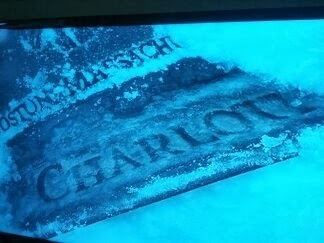Name Charlotte Beam 28 ft 3 in (8.61 m) Launched 1784 | Length 32 m | |
 | ||
Owner 1784 Mathews & Co.1789 Bond &Co. Fate Possibly sunk November 1818; disappears from lists in 1821 Tons burthen 335, or 338, or 345 ⁄94, or 384 bm | ||
Charlotte was an English merchant ship built in the River Thames in 1784 and chartered in 1786 to carry convicts as part of the First Fleet to New South Wales. She returned to Britain from Botany Bay via China, where she picked up a cargo for the British East India Company. Charlotte then spent most of the rest of her career in the London-Jamaica trade. She may have been lost off Newfoundland in 1818; in any case, she disappears from the lists by 1821.
Contents
Convict transport
She was a "heavy sailer," such that she had to be towed down the English Channel in order to keep pace with the rest of the Fleet. Her master was Thomas Gilbert, and her surgeon was John White, principal surgeon to the colony. On 15 May, when Charlotte had been two days at sea it was discovered that her third mate had been left behind at Portsmouth; he was replaced for the remainder of the voyage by a seaman hastily dragooned from the accompanying naval vessel Hyaena.
She left Portsmouth on 13 May 1787, carrying 84 male and 24 female convicts, or 88 male and 20 female. Among the prisoners were James Squire, James Bloodsworth, James Underwood, Samuel Lightfoot, William Bryant and Mary Bryant, She also carried 42 men from the New South Wales Marine Corps to guard the convicts.
Charlotte arrived at Port Jackson, Sydney, Australia, on 26 January 1788. This voyage was commemorated on the Charlotte Medal, commissioned by White.
She left Port Jackson on 6 May 1788 bound for China to take on a cargo of tea, under charter to the East India Company.
Later career and fate
On her return to England on 28 November 1789 Bond and Co., Walbrook merchants, purchased Charlotte to use her in the London—Jamaica trade. Later, she was sold to a Quebec merchant.
A Charlotte was lost off Newfoundland in November 1818. However, there is no evidence to link the Charlotte that sank while sailing from Quebec to Liverpool with M'Call, master, to the Charlotte of this article. Another source notes that Charlotte continued to be listed in Lloyd's Register until 1821.
Recognition
An Urban Transit Authority First Fleet ferry was named after Charlotte in 1986.
